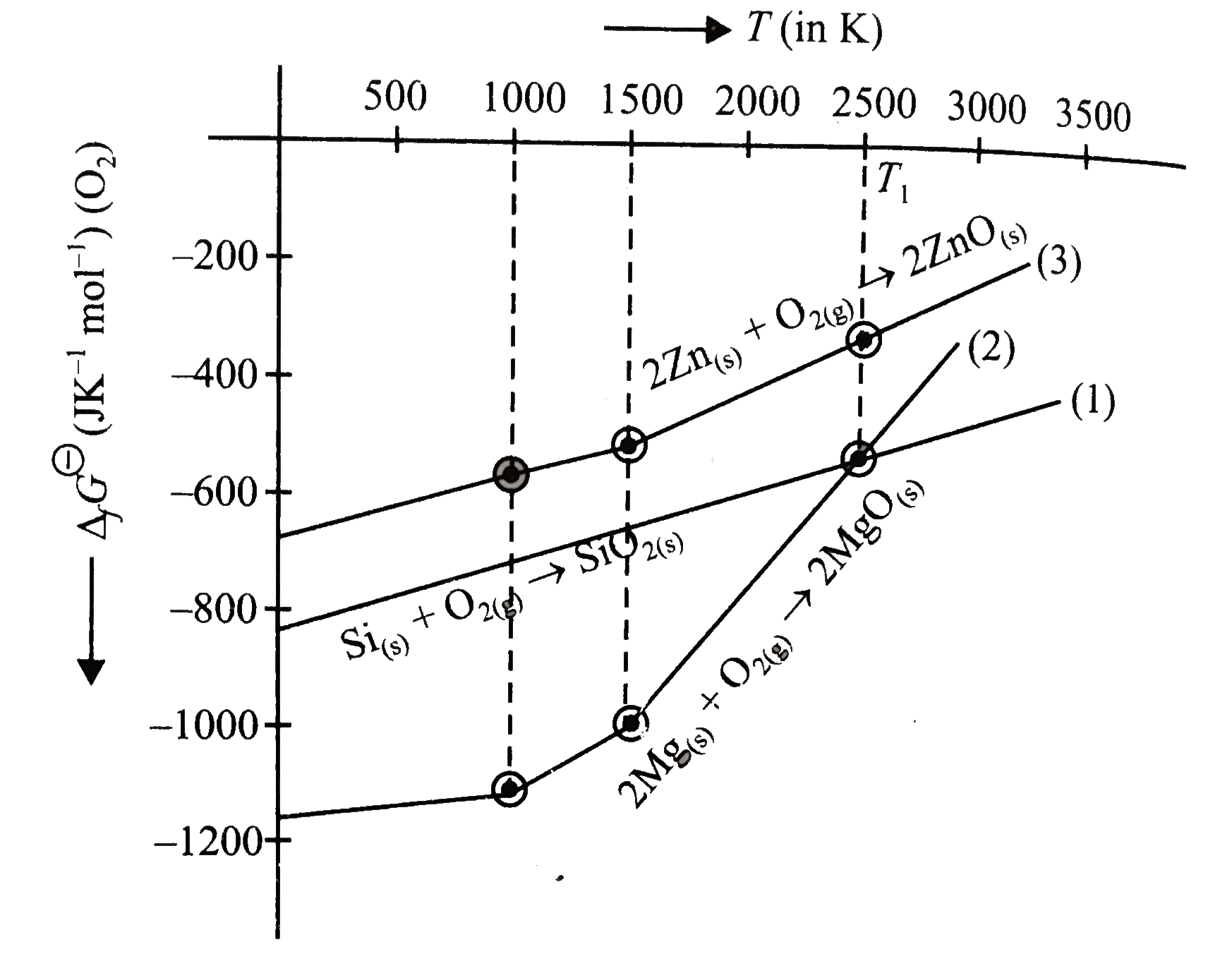Complete Solutions to Illustration of chapter GENERAL PRINCIPLES AND PROCESS OF ISOLATION OF ELEMENTS of Class 12 book with complete answers and questions
| Class 12 | CHEMISTRY |
| Chapter | GENERAL PRINCIPLES AND PROCESS OF ISOLATION OF ELEMENTS |
| CENGAGE CHEMISTRY | Illustration |
| Number Of Questions | 10 |
| Academic Year | 2023-24 |
Give examples of `(a)` igneous and `(b)` sedimentary rocks. What is the origin of `(a)` igneous rocks and `(b)` sedimentary rocks ?
02:00View Solution(a) In general, which metals are expected to occur in the native state in nature ?
(b) A certain metal `M` occurs in three compounds namely `X,Y` and `Z.X` has `15 %` of `M,Y` has `66 %` of `M` and `Z` has `71%` of `M`. If we extract `M` from `X, Y` and `Z`, it costs `Rs. 35 per kg, Rs. 45 per kg` and `Rs. 100 per kg` respectively. Out of `X,Y` and `Z` which material can be considered as an ore of `M` ?02:47View SolutionMetal sulphides occur mainly in rocks and metal halides occur in lakes and seas. Give reason.
(b) Pine oil is used in froth flatation process. Why ?
( c) What is a depresent ? Give an example.
(d) What is the role of stabiliser in froth flotation process ?
( e) What is gangue ?03:59View Solution(1) Metals occur in the native form because of their
(a) High electronegativity
(b) Low reactivity
( c) Low density
(d) High reactivity
(2) Specific gravity of slag is
(a) Higher than molten metal
(b) Same as that of molten metal
( c) Less as that of molten metal
(d) None of the above
(3) Which process is used for the extraction of metals from their sulphide ores ?
(a) Smelting
Froth flotation
( c) Electrolysis
(d) Metal displacement
(4) Calamine is an ore of
(a) `Hg`
(b) `Zn`
( c) `Ca`
(d) `Cd`
(5) Non-fusible impurities of ores removed by adding
Slag
(b) Flux
( c) Gangue
(d) None
(6) Common method of extraction of metals from oxide ore involves.
(a) Reduction with aluminium
(b) Reduction with carbon
Reduction with hydrogen
(d) Electrolytic method
(7) Smelting is the reduction of oxide to metal by
(a) Carbon
(b) Hydrogen
( c) Aluminimum
(d) Electric current
During froth flotation process, commonly used frother is.
(a) `CuSO_(4)`
(b) `NaCN + alkali`
( c) Pine oil
(d) Potassium xanthate
(9) Iron ores are dressed by
(a) Froth flotation process
(b) Hand picking
( c) Magnetic separation
(d) All of the above
(10) Silicon is the main constituent of
(a) Alloys
(b) Rocks
( c) Animals
Plants.03:32View SolutionInterpret the following Ellingham diagram.
 .03:21View Solution
.03:21View Solution(a) Suggest a condition under which magnesium could reduce alumina.
(b) Although thermodynamically feasible, in practice magnesium metal is not used for the reduction of alumina in the metallurgy of aluminium. Why ?
( c) What is the reduction of a metal oxide easier if the metal formed is in liquid state at the temperature of reduction ?
(d) At a site, low grade copper ores oare available and zinc and iron scraps are also available. Which of the two scraps would be more suitable for reducing the leached copper ore and why ?04:21View SolutionWhy is it advantageous to roast a sulphide ore to the oxide before reduction ?
01:10View Solution(a) What is a slag ?
(b) Give the principle of zone refining ?
( c) An ore sample of galena `(PbS)` is contaminated with zinc blende `(ZnS)`. Give an example of a chemical which can be used to concentrate galena selectively by froth flotation process.
(d) What is meant by the term 'Pyrometallurgy' ?02:20View Solution(a) Indicate the temperature at which carbon can be used as reducing agent for `FeO`.
(b) Define flux.
( c) Metal usually do not occur in nature as nitrates. Why ?
(d) Metal such as `Cu, Ag, Zn` etc. occur in nature as sulphide rather than oxides. Why ?03:53View Solution(a) Which of the following metals cannot be extracted by the smelting process ?
`Al, Zn, Fe` and `Pb`.
(b) Graphide is used as anode but not diamond. Give reason.
( c) Give a method for separation of nickel from cobalt ?03:01View Solution
Illustration questions and complete solutions for chapter GENERAL PRINCIPLES AND PROCESS OF ISOLATION OF ELEMENTS of CENGAGE CHEMISTRY (HINGLISH) of Class 12
All Exercises from CENGAGE CHEMISTRY Class 12 CHEMISTRY GENERAL PRINCIPLES AND PROCESS OF ISOLATION OF ELEMENTS
- Archives (Fill In The Blanks)
- Archives (Linked Comprehension)
- Archives (Multiple Correct)
- Archives (Single Correct)
- Archives (Subjective)
- Exercise (Assertion-Reasoning)
- Exercise (Fill In The Blanks)
- Exercise (Integer)
- Exercise (Multiple Correct)
- Exercise (Single Correcttype)
- Exercise (True/False)
- Exercises (Linked Comprehension)
- Exs 1.1 (Objective)
- Exs 1.1 (Subjective)
- Exs 1.1 (True Orfalse Statement)
- Illustration
- Solved Example
